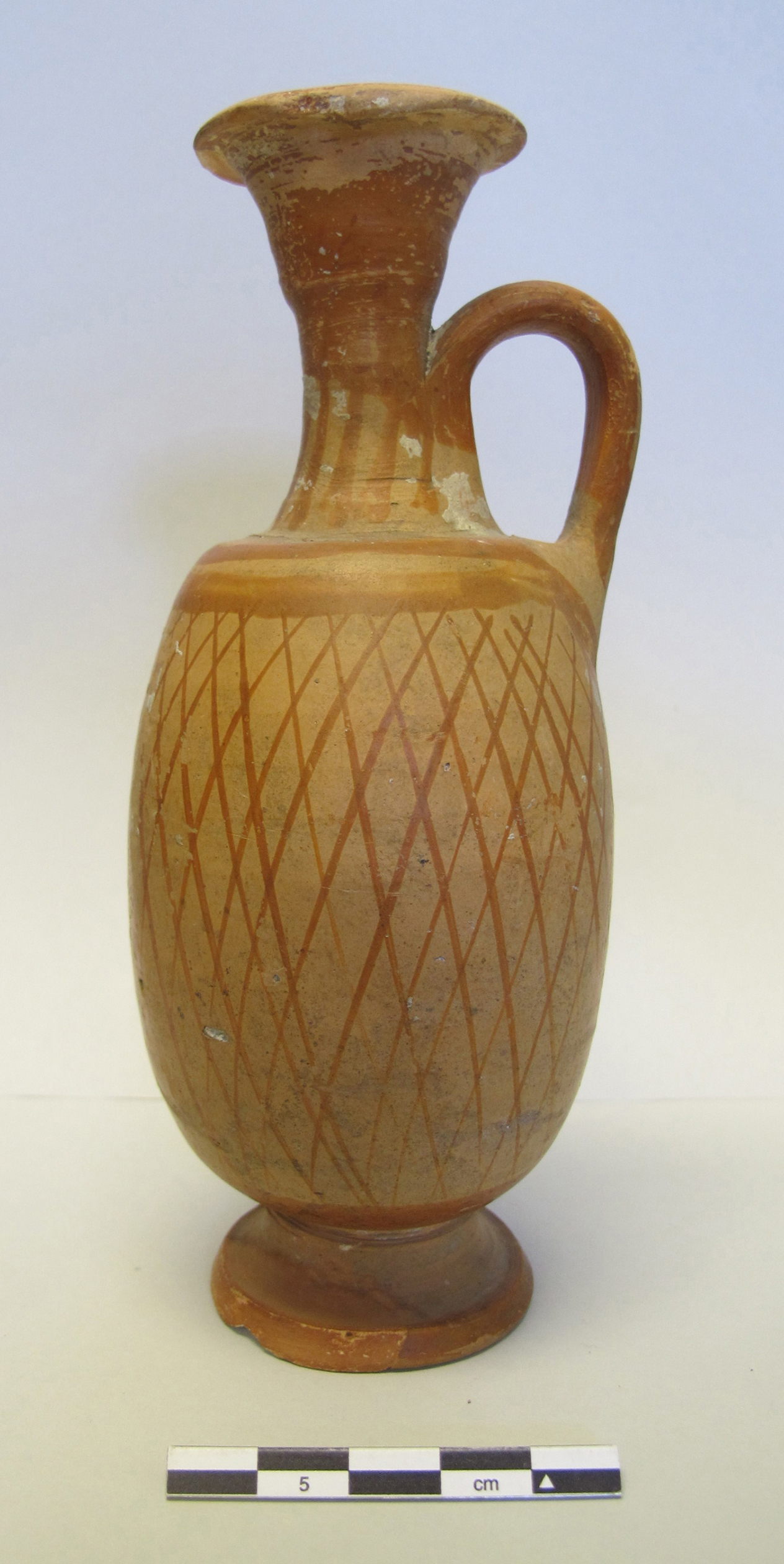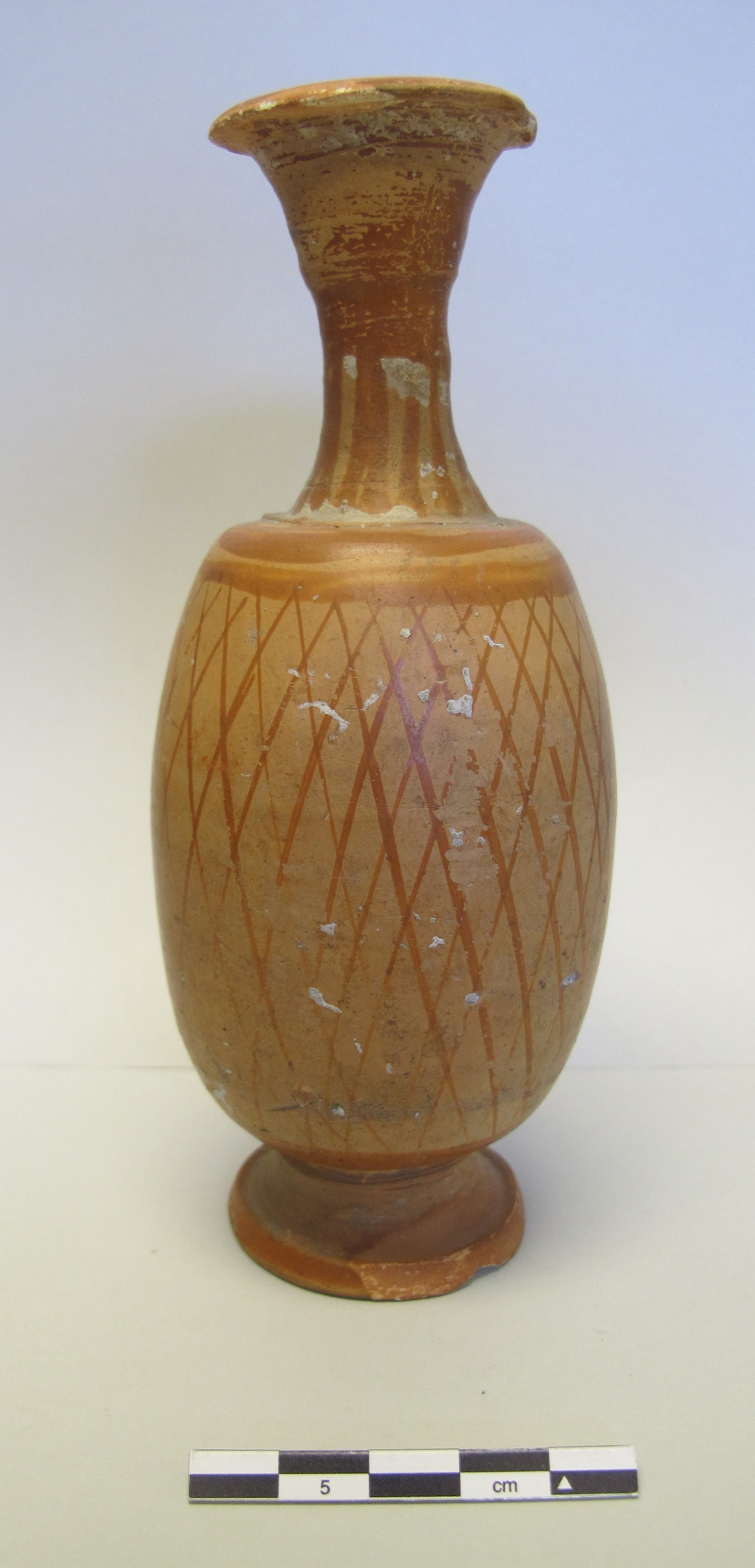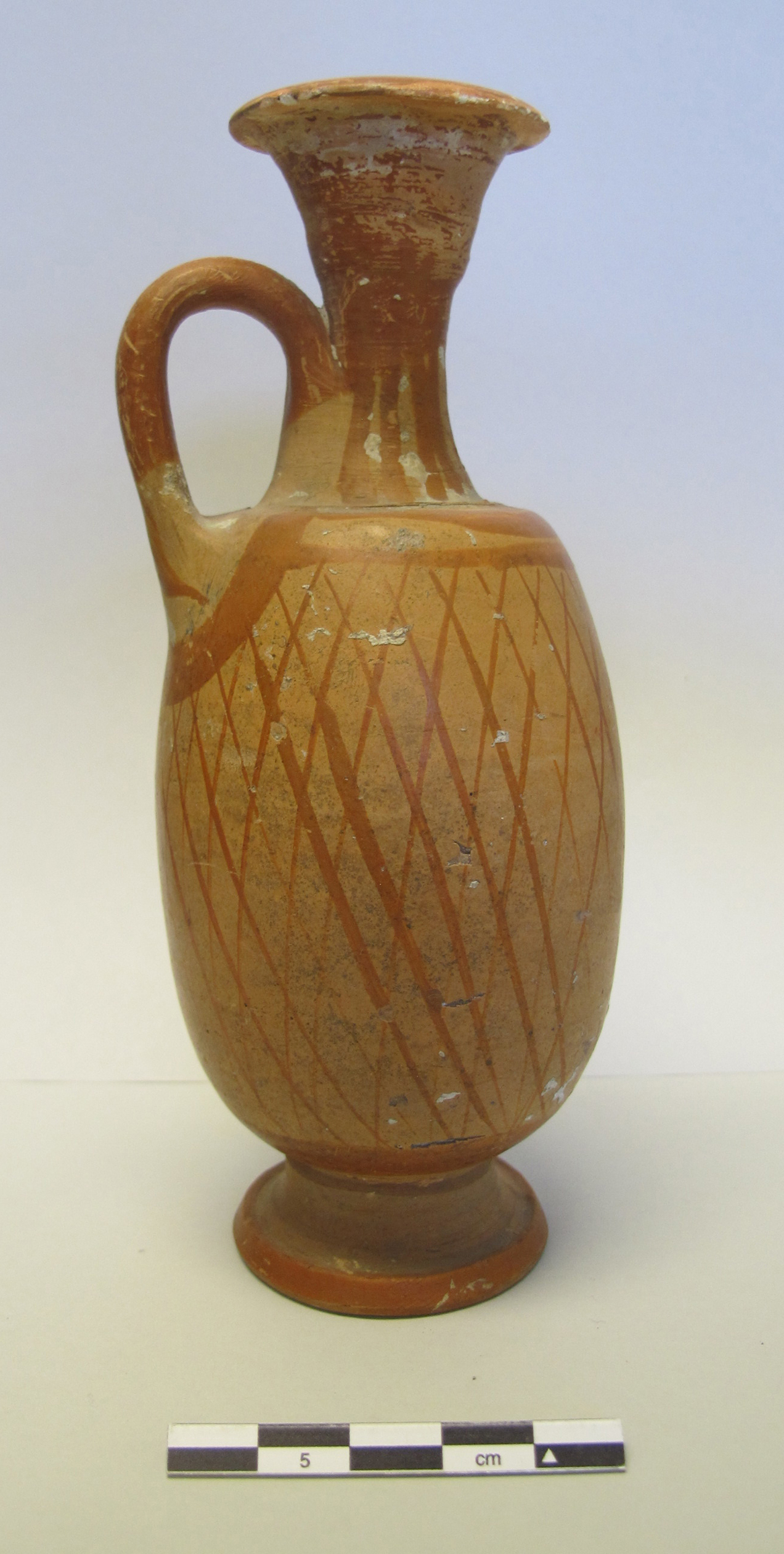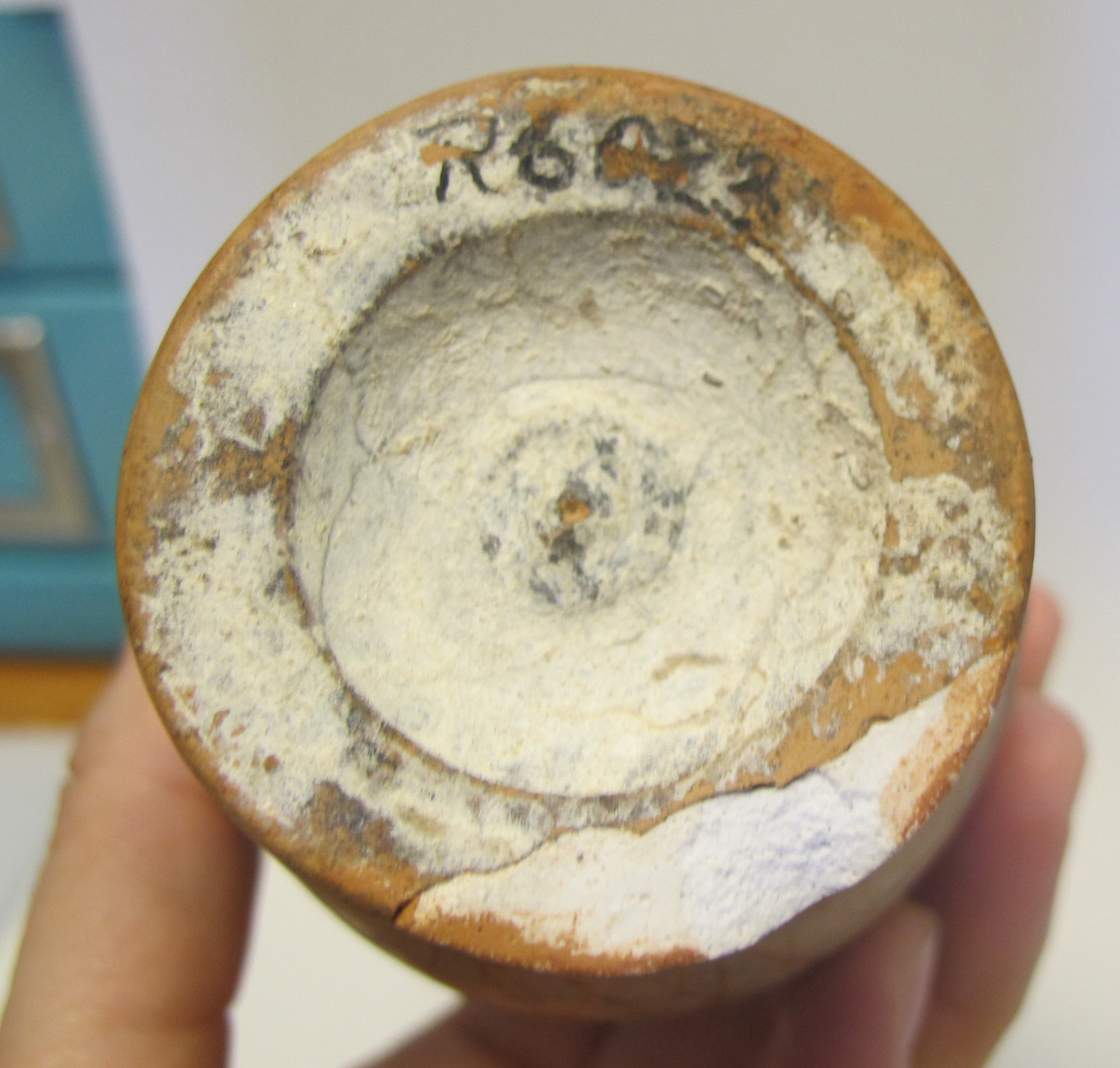For a 3D model made by the Virtual Curation Lab at Virginia Commonwealth University, see https://sketchfab.com/3d-models/lekythos-vcu-3d-6662-f42ad48b53d14d049e981ffaac0289d2
AWG0000.01.13 (R6023)
Greek, South Italian (Apulian?)
Late Classical to Hellenistic (400-200 BCE)
Material: Ceramic
Weight: 211g
Dimensions: 15.3 cm high, base diameter 4.75 cm, max. diameter 5.9 cm, handle width 1 cm, rim width 4.3 cm, spout width 1.1 cm
Condition: good; chip on foot restored with plaster; paint worn, with small spots of encrustation dot the outside and cover most of the base.
Provenance: Unknown
Source/donor: Unknown
Date of acquisition: Prior to 1939. The inventory number beginning with R suggests that it was part of the Richmond College Museum collection. Other R-numbered items were displayed in the Biology Museum in Maryland Hall beginning in 1932, and this vase appears in a photo of that museum published in 1939.
Research by: Hunter Hagan, ’22
Detailed description of form/shape:
Rounded oval body, tall vertical loop handle, narrow neck, wide rim that flares out to a flat lip, and flat ring foot below short straight pedestal.
Detailed description of decoration:
Red-painted designs on orange clay. The edge of the rim has red paint leaving a 1.1 cm wide unpainted ring around the mouth. The top half of the neck appears to have been completely red at one point but the slip has since worn off; vertical lines lead down to the shoulder where two lines follow the lekythos around and adjust lower to avoid the handle which is painted red; a red net pattern covers the body of the lekythos down to the bottom of the body where another red line encircles the piece; the edge of the foot is covered with a red band.
Comparanda:
For a similar design but with more artistic elements, cf. MFA Boston 98.202 (Padgett et al. no. 126). For the closest parallel in shape and quality, see BAPD vase no. 9033279, a lekythos in Dresden, and another in the RD Milns Antiquities Museum, Queensland 95.124. For similar net patterns with vertically lined necks, see Gobbi and Milletti figs. 15-17.
Discussion:
Lekythoi were flasks for perfumed oil, usually used as grave offerings. Often they were mostly solid, holding a deceptively small amount of liquid relative to their size, since perfumed oil was expensive. “Net lekythoi” (covered with a lattice pattern) became very common in the Late Classical period, especially in South Italy. Over time the decoration became less precise, as these flasks began to be produced in large quantities. Here, the paint application appears haphazard and lacks a sense of precision. Most net lekythoi are decorated with dark slip patterns on a light background. The red color of the painted decoration on this piece probably results from too much oxygen in the kiln during the ‘reducing’ phase of firing, when the slip would normally turn black.
Bibliography:
“9033279, South ITALIAN, Apulian, Dresden, Staatliche Kunstsammlungen, ALBERTINUM, AB254.” Classical Art Research Centre - Beazley Archive. Accessed September 29, 2021. http://www.beazley.ox.ac.uk/record/6702A12D-3241-4833-942D-E67A6C7E04DC
Bailey, John Wendell. Biology at the University of Richmond. Richmond: University of Richmond, 1939.
Čargo, Boris. "Posude s mrežastim ukrasom iz Ise na otoku Visu." Vjesnik za arheologiju i historiju dalmatinsku 110, no. 1 (2017): 173-191.
Gobbi, Alessandra, and Matteo Milletti. “Le Lekythoi A Reticolo E La Loro Diffusione Lungo La Dorsale Tirrenica.” Archeologia Classica 65 (2014): 139–80. http://www.jstor.org/stable/26234064.
Padgett, J. Michael, Amy E. Raymond, Emily Vermeule, and Florence Z. Wolsky. Vase Painting in Italy: Red-Figure and Related Works in the Museum of Fine Arts, Boston, 202–3. Boston: Museum of Fine Arts, 1993.




